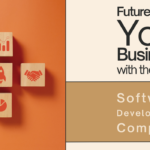In today’s rapidly evolving healthcare landscape, the integration of cutting-edge technologies has become imperative to enhance patient care and optimize operational efficiency. Among these technologies, edge computing emerges as a game-changer, offering real-time data processing and analysis at the network’s periphery. As a software development company dedicated to advancing healthcare solutions, we recognize the profound impact that edge computing can have on transforming patient outcomes and healthcare delivery. In this blog post, we delve into how edge computing enhances patient healthcare, examining its key benefits and applications.
Introduction to Edge Computing in Healthcare:
- Define edge computing and its significance in healthcare.
- Explain how edge computing complements cloud computing by bringing computation closer to the data source.
Real-Time Data Processing and Analysis:
- Discuss the importance of real-time data processing in healthcare scenarios.
- Highlight how edge computing enables the rapid analysis of patient data at the point of care, leading to timely interventions and improved decision-making by healthcare professionals.
Enhanced Patient Monitoring and Remote Care:
- Explore how edge devices facilitate continuous patient vital signs and health metrics monitoring.
- Illustrate how edge computing enables remote patient monitoring, allowing healthcare providers to deliver personalized care outside traditional clinical settings.
Improved Telemedicine Services:
- Examine how edge computing supports telemedicine initiatives by reducing latency and improving the quality of video consultations.
- Discuss the role of edge devices in ensuring secure and reliable connectivity for telehealth applications, especially in remote or underserved areas.
Efficient Management of Healthcare Devices:
- Address the challenges of managing a large number of medical devices and sensors in healthcare environments.
- Highlight how edge computing streamlines device management tasks, such as firmware updates, data synchronization, and security protocols, leading to increased operational efficiency.
Data Privacy and Security:
- Emphasize the importance of safeguarding patient data in healthcare systems.
- Explain how edge computing minimizes data exposure by processing sensitive information locally, reducing the risk of unauthorized access or data breaches.
Scalability and Flexibility:
- Discuss how edge computing architectures offer scalability and flexibility to accommodate the growing volume of healthcare data.
- Showcase examples of how healthcare organizations can seamlessly scale their edge infrastructure to meet evolving demands without compromising performance or reliability.
Future Trends and Innovations:
- Explore emerging trends in edge computing and their potential impact on healthcare delivery.
- Speculate on future innovations, such as AI-powered edge analytics and edge-to-cloud orchestration, and their implications for improving patient care and operational efficiency.
Summarize the key benefits of leveraging edge computing in healthcare, from real-time data processing to enhanced patient monitoring and telemedicine services. Reiterate the role of software development services in driving innovation and empowering healthcare organizations to harness the full potential of edge computing for the benefit of patients and providers alike.
In conclusion, edge computing represents a paradigm shift in healthcare delivery, offering unprecedented opportunities to enhance patient care, improve clinical outcomes, and optimize operational efficiency. As a custom application development provider committed to advancing healthcare solutions, we remain at the forefront of this transformative technology, collaborating with healthcare organizations to harness the power of edge computing and pave the way for a healthier and more connected future.






